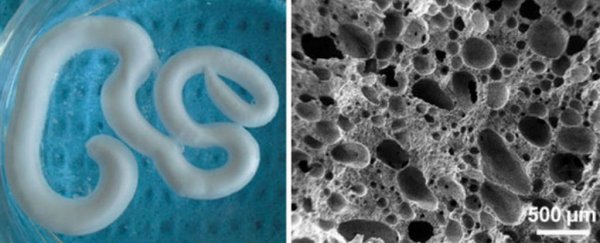Researchers in France have developed a special kind of injectable foam that could be a significant help in repairing bones damaged by degenerative diseases such as osteoporosis. While calcium phosphate cement (CPC) has been used in bone repair for many years, this new formula is much more suitable for use with older and more brittle bones.
The new CPC mixture is macroporous rather than microporous - the larger holes make it better at reinforcing mature bone and reinforcing it in a faster time. As it can be applied via a syringe, it means minimal discomfort for the patient, and none of the inconvenience or risk associated with a larger operation.
"Our approach is simple and gives us really good results in terms of mechanical properties and macroporous structures," lead researcher Pierre Weiss from the University of Nantes told Chemistry World. "We think this could be a good biomaterial, perhaps with active molecules, to act against osteoporosis locally. We need to determine the proof of concept in animal models."
The magic ingredient turned out to be a special hydrogel that acted as a foaming agent and created air bubbles within the original mixture. When the hydrogel was mixed quickly with the base CPC, the new foam was the result, and it could be particularly useful for repairing the flexible and spongy tissue that typically degenerates in the bodies of osteoporosis sufferers.
Based on tests carried out with rabbits, the foam does cause new bone to form and leaves no toxic effects on the body. But plenty of additional tests will be required before the substance is used on humans.
"There are quite a few groups working on this issue and different solutions proposed," said Eduardo Saiz, who investigates biomaterials for bone repair at Imperial College London, but wasn't involved in this study. "This could be one, the preliminary results are very interesting. If the research progresses well it could give surgeons an easy to use material for minimally invasive procedures, which will benefit clinical practice."
The first recorded use of CPCs in repairing bone goes back to the 1920s, and since then they've been allowing surgeons to fix defective bones with a mixture that's self-setting, non-toxic and relatively easy to apply. The new hydrogel formula opens up the possibility of bringing the same benefits to bones which have substantially wasted away due to disease.
The study been published in the journal Acta Biomaterialia.
